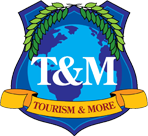Still More on Old-New forms of Tourism Research and Product Development
September 2017
The world is changing faster than most of can often comprehend. New threats seem to arise daily, from threats of nuclear war to threats of economic crises, from acts of low-tech terrorism, such as car ramming, to new computer scams. These accelerated changes means that tourism professionals must adapt to a world that is not only often incomprehensible to the professional but even more so to his/her client.
This consistency of change requires tourism professionals to constantly update their attitudes and assumptions and become not only up-to-date with the world in which they work, but also be open to constantly new “paradigm shifts.” In other words, tourism specialists must show a great amount of flexibility in what they market, how they market, and to whom they market. They must develop new and imaginative ways to address ever-changing demographics, political, and economic situations. These changes touch every aspect of tourism.
For example, tourism practitioners have begun to change their emphasis from beautiful brochures to beautiful landscaping. That is to say, it is not what you say you have but what you do have! Tourism professionals know that the public’s lack of trust in the media has spilled over into tourism marketing and our customers now tend to view what we publish with a healthy dose of skepticism.
Instead of spending a great deal of money on good advertising, many tourism professionals are spending more money on personnel and product development in the hopes of creating an overall better customer experience. This shift does not mean that all marketing is a waste of money. Instead, the shift calls for new and creative ways to market and an ever-deeper understanding of our clients’ hopes and fears.
To help you connect these paradigm shifts with your own community or attraction, consider if some of the following ideas would work for you:
- Face the fact that today’s travelers are highly skeptical about the accuracy of travel information. There was a time when social media seemed to be more accurate than the written word. There are now so many false “testimonials” on social media that the public has now become inured to these and often discounts both the classical media and the new forms of social media. In a world of distrust, build trust, do not exaggerate and if you promise something then deliver what you promise.
- Know that your customers are not stupid. It is the visitor who knows best what he/she desires from the vacation or travel experience and,not you. Speak with the people who work with the tourists: your front line personnel. These are the people who hear the complaints and compliments and often know where adjustments are needed. At the end of each season, take the time to interview as many front line people as possible. People to be interviewed should include:
- gas station attendants
- hotel cleaning people
- waiters and waitresses
- ticket takers
- airport personnel
- local police officers who work in tourism areas
- Train! Train! and then train some more! The higher the quality of training, the better your product and the best marketing is a good product. Bring in experts to train people all over your community. Seek ways to get the entire community on-board by training everyone from security personnel to front line people. Ask these people about the training that they would like to have and then provide it.
- Security is a major part of marketing. In today’s world the public lives with multiple fears, from identity theft to terrorism, from a potential nuclear war to common street crime. May of these fears are simply fears, but the basic rule that a perception may not be true but its consequences are always true very much holds in the interaction between security and marketing. Security personnel must connect with the public. The modern tourism security department is as fluent in issues of customer service, and social – psychology as it is in the use of electrical equipment, weapons, and classical security training. Then combine security with the underlying site theme(s). Ask yourself such questions as: Why do people come to your location? What do they wish to take away at the end of their stay? What are you really selling?
- Personalize every aspect of your operation, from the cleaning staff to those in management, from security personnel to parking lot attendants. Too many tourism businesses have forgotten that it is the human touch that creates and changes attitudes. People tend to forgive mechanical or technical snafus, but will long remember both a smile and a frown. Employ attitudes are an essential part of modern marketing especially in a world where humans are steadily giving way to mechanical devices and to robots.
- Humanize your research. Quantitative research is essential but numbers can also be manipulated to say what we want them to say and often fail to tell the whole story. Combine multiple research methods. Each form of research presents only a partial “snapshot” of whatever it is that you are measuring or studying. Take the time to speak with guests, here what they have to say and ask hard hitting questions. Another technique is to pick several guests randomly and ask them to speak with members of your staff. Afterward provide the interviewee with some sort of token of your appreciation.
- Encourage your tourism employees to visit other locales and then debrief them. Find out what they liked and did not like about their tourism experience. Then ask them how they can incorporate these successes into your product or if the failures they observed can be avoided in your business. Having employees become part of your research team creates not only great marketing research but also helps to create a sense of teamwork.



